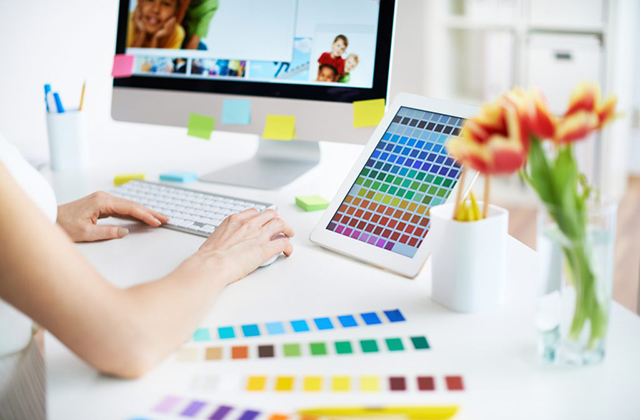Autism and Education – How Does it Affect Your Child’s Education?

College community services also accept students that have autism. Autism is a disorder that affects the entire person and most often lasts for the lifetime of the person that it affects. Specifically this disorder affects one’s ability to create emotions, memories, sensory abilities, non-verbal communication skills and much more. It affects one in one hundred and fifty individuals of all races and social status; and tends to affect more boys than it does girls.
A common description that I have heard among professionals is that many people who suffer from autism can think thoughts but cannot vocalize those same thoughts.
Key Symptoms Include the Following:
Repetitive Behavior – For example, a young child may seem unusually fixated on a particular toy, constantly arranging objects in a specific way or obsessive about certain things.
Lack of Social Interaction – Another symptom is in the area of relationships. Research has found that people who suffer with autism are usually ‘socially unaware’. This means that they are oblivious to the feelings of people around them.
Verbal and Nonverbal Communication – By nature, autism is a neurobiological disorder. Hence it affects the manner in which the brain converts thoughts into words. Therefore, a child might be thinking of an answer to a question, but vocalizing it becomes a very difficult task! Non-verbal communication is difficult for many of us who are considered “normal”, so imagine what it must be for one who has difficulty connecting with their emotions – let alone the emotions of others!
Limited interests in activities or play – For example, a child might focus on a part of a toy instead the whole toy or play a specific tune on a toy over and over again, rather than play the twenty-nine other tunes on the toy. Also the need for a rigid routine would mean that any new activities are met with resistance.
Tell Tale Signs
During early childhood it is not uncommon for parents to have troubling instincts about certain behaviors that their child may display – for example they may not want to be held, don’t look people in the eye, have delayed speech, lack of interest in games or what I call ‘super repetitive play” – where the child only seems interested in one toy – ever, etc. As both a parent and a teacher (as well as one who has an autistic half-sister), please, please, please follow your instincts.
Nobody knows your child the way you do, so if your pediatrician says “wait and see” yet you feel strongly that your child needs to be evaluated – do what YOU feel needs to be done. Parents that I have heard from have mentioned some of the following as red flags that got them concerned – their child was ‘not pointing’,’not giving them eye contact’, didn’t seem to be ‘able to focus’, ‘unaware of their surroundings’ or as one lady put it “I just don’t feel like she is connecting with me”.
Early Intervention
Early intervention, especially in the pre-school years has been proven (by researchers) to, in many cases improve social, cognitive and communication skills – especially if it is in an educational setting that is tailored to meet the needs of a child with special needs. Remember, for some children, the earlier the intervention, the better!
Types Of Autism
A spectrum has been created for autism which makes it possible for the medical profession to accurately diagnose the disorder. The disorders range from mild (Asperger Syndrome) to severe (Autistic Disorder) and can be diagnosed by the age of three and sometimes as early as eighteen months. Autism Spectrum Disorders are categorized based on the degree of impairment that the sufferer encounters in the following areas;
o Communication Skills
o Social Interaction
o Restricted Patterns of Behavior
Asperger’s Syndrome
In 1940, Hans Asperger’s described a set of behavioral symptoms that occurred mostly in his male patients. They all seemed to have normal intelligence and language development, yet they had poor co-ordination and communication skills. In addition their social skills were very noticeably lacking.
Typical symptoms of Asperger’s Syndrome include the child being diagnosed much later in life than with typical autism – usually between the ages of five through nine. In addition they are known to have limited facial expressions, obsessive behavior, poor social interactions, difficulty reading the body language of others, odd speech patterns and obsessive routines.
In addition to the above, symptoms of Asperger’s Syndrome include an unusual sensitivity to sensory stimulii such as lights (that others will not notice as being too bright) or sounds (that others might barely be able to hear.
Childhood Disintegrative Disorder
Childhood Disintegrative Disorder or CDD was discovered by a special educator by the name of Theodore Heller. Children with CDD are said to develop a disorder that resembles autism, but only after two to four years of normal development. In other words, the children unexplainably seem to regress. They lose their language skills,their toileting and self care abilities, their interest in the environment, etc. While the disorder begins to look exactly like autism, the history is very different.
Symptoms include increased risk of seizures as well as the symptoms of autism.
Rett Syndrome
Rett Syndrome was first diagnosed in 1954 by Dr Andreas Rett, an Austrian Pediatrician. It is a developmental disorder that has a greater tendency to occur in girls more than it does boys. It is caused by mutations on the X chromosome on a gene called MECP2. Symptoms include normal development until six to eighteen months after which there is after which there is a stagnation or slowing down of skills. Following the stagnation, there is a period of regression when the child looses their communication skills and eventually all purposeful use of their hands. Symptoms that follow include the stereotypical hand washing movement, seizures, slowing of normal head growth and disorganized breathing patterns.
The disorder can be confirmed with a simple blood test.
Pervasive Developmental Disorder – Not Otherwise Specified
Otherwise known as PDD – NOS, is a condition on the spectrum in which one person doesn’t act like another with the same disorder. In other words, John may display some symptoms, while Mary may display something totally different. Also they may often be subject to the same key symptoms, but may be in varying degrees.
Due to the very nature of PDD – NOS (meaning that there are no strict symptoms because they vary from one child to another), PDD-NOS is very difficult to diagnose and is therefore often misdiagnosed. Treatment also has to be very specific to the needs of the person in question and may often include alternative therapies such as martial arts and music.
Autistic Disorder or Classic Autism
Is sometimes referred to as ‘mind-blindedness’ – referring to the need to be in their own world, lack of social interaction and, limited ability to communicate, a display of repetitive behaviors and distress over changes – no matter how small. Children (or adults, for that matter) who suffer from classic autism are not considered to be “high functioning”.
How Does Autism Affect Your Child’s Education?
In many cases, the ‘autistic child‘ will be required to be in Special Education classes – where teachers are trained to understand how to deal with the symptoms, autistic tendencies and other disorders. While “inclusion” is the new buzz word in special education, I find that children with severe autism do not usually benefit from it. However I have seen children with autism benefit and even excel in certain subjects; for example, I was observing a business computing class once where the code html was being taught. During a test, the teacher deliberately placed errors in part of the code for the students to correct and re-write. Well there was a young man in the class who corrected the teacher before the test began – and he had Asperger’s Syndrome. His ‘obsessive behavior’ worked out to his advantage – it converted into ‘attention to detail’ resulting in him becoming an outstanding website designer.
Weaknesses can be turned to strengths sometimes – and I hope that they will for your child.
(c) Copyright Lydia Riddle 2009
For further details on education and kids, please take a look at my website at http://www.educatekidz.com
Article Source: https://EzineArticles.com/expert/Lydia_Riddle/307324
Article Source: http://EzineArticles.com/2384245



